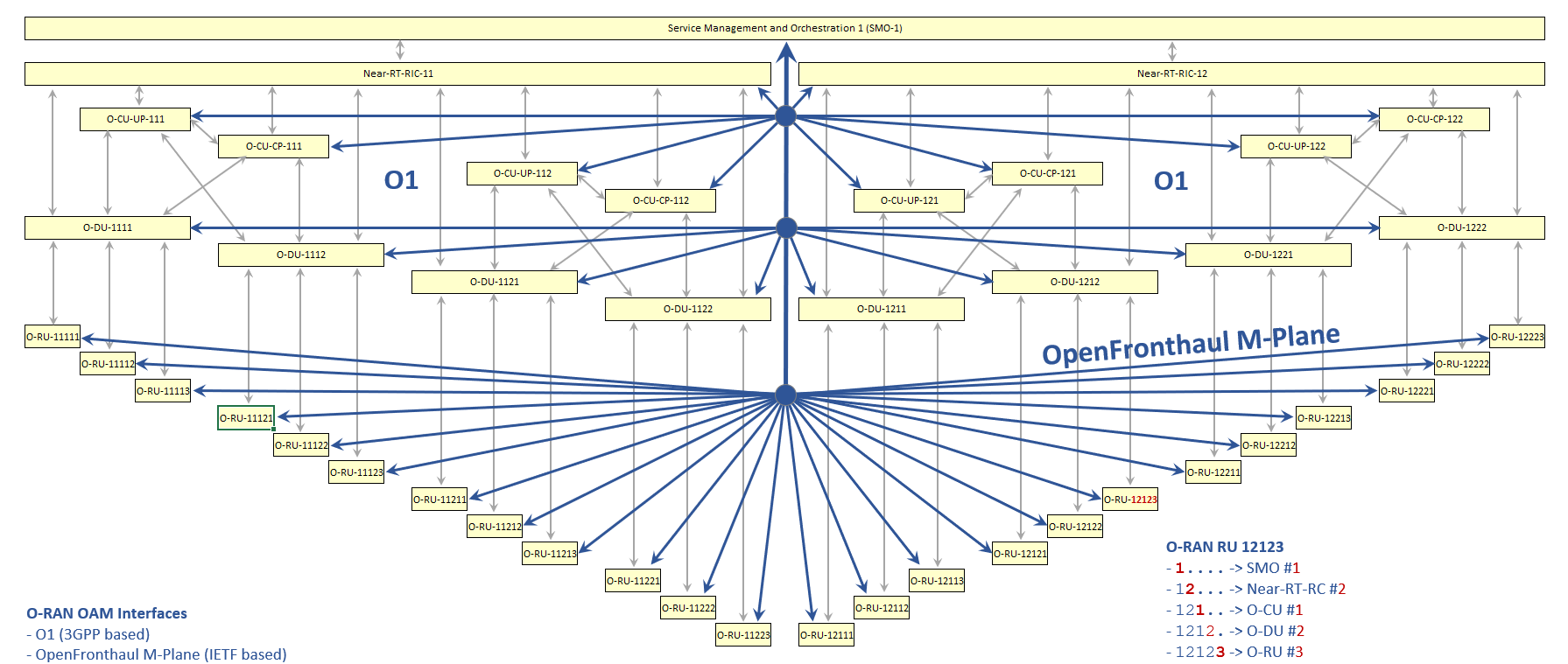Scope
Even in smaller RAN networks, it is quite confusion when description and discussing issues when there is no clear naming conventions are assigned.
This page proposes a naming conventions to serve the O-RAN-SC use cases.
Naming Convention
The O-RAN Architecture defines a hierarchy of components. This hierarchy should be reflected in the component names. Typically a distinguish name can be used. The drawback of such distinguish names is, that those become very long within a hierarchy. To shorten the names the O-RAN Component name concatenated with a local identifier compared it its hierarchy level could be used.
Example:
O-RU-12123
"O-RU" is the O-RAN Component Name.
The "identifier" 12123 is a combination of the local-ids in the hierarchy.
1.... -> SMO #112... -> Near-RT-RC #2121.. -> O-CU #11212. -> O-DU #212123 -> O-RU #3
Note: Obviously this naming conventions has its limitation but should be able to server O-RAN-SC use cases. In more complex scenarios more complex rules must be applied.
